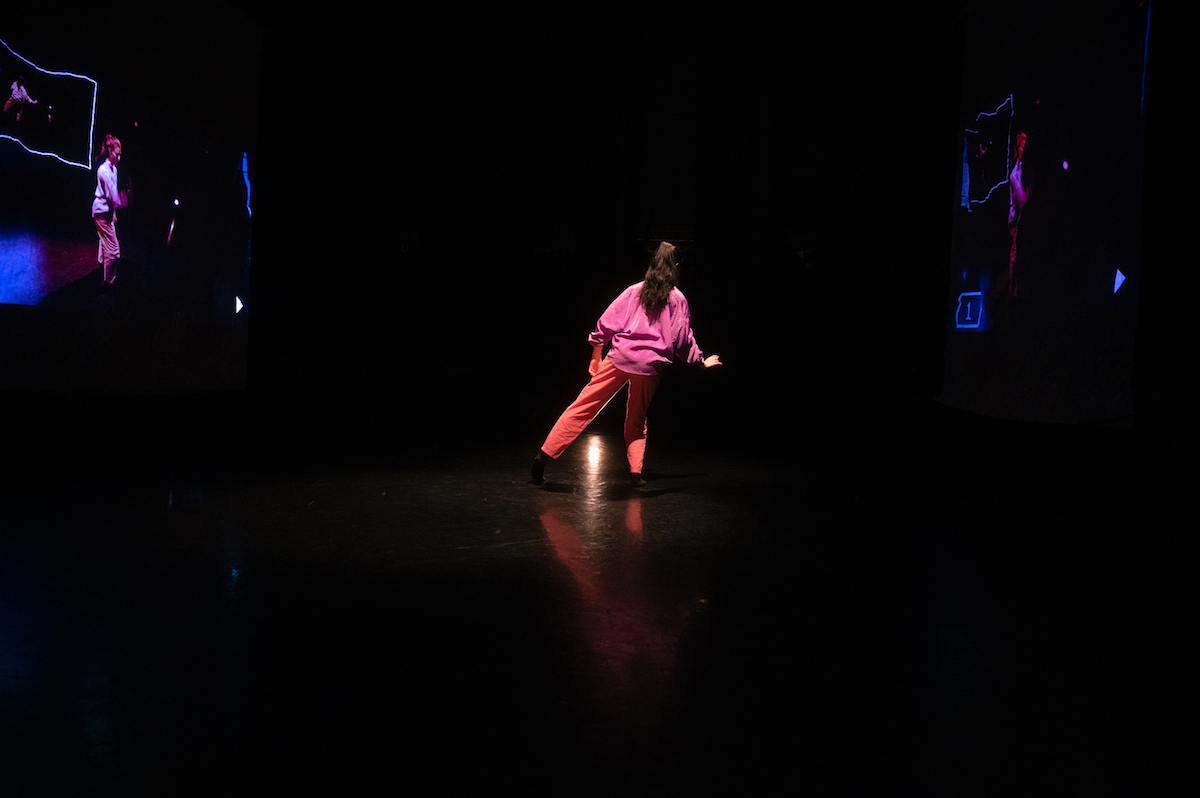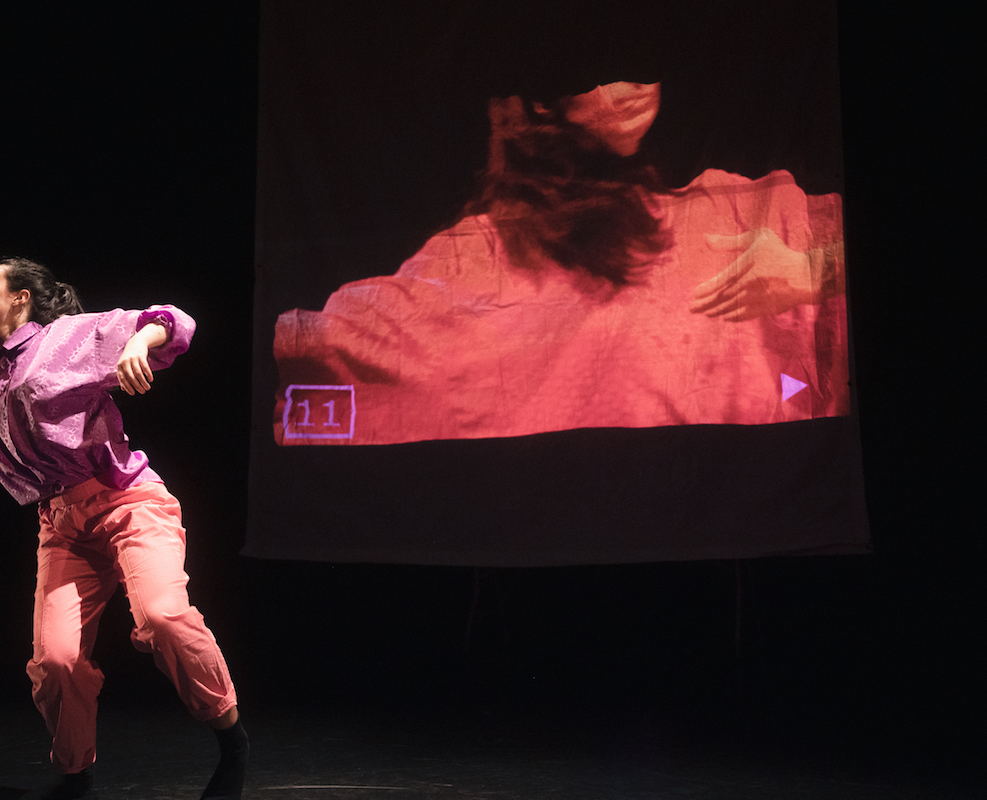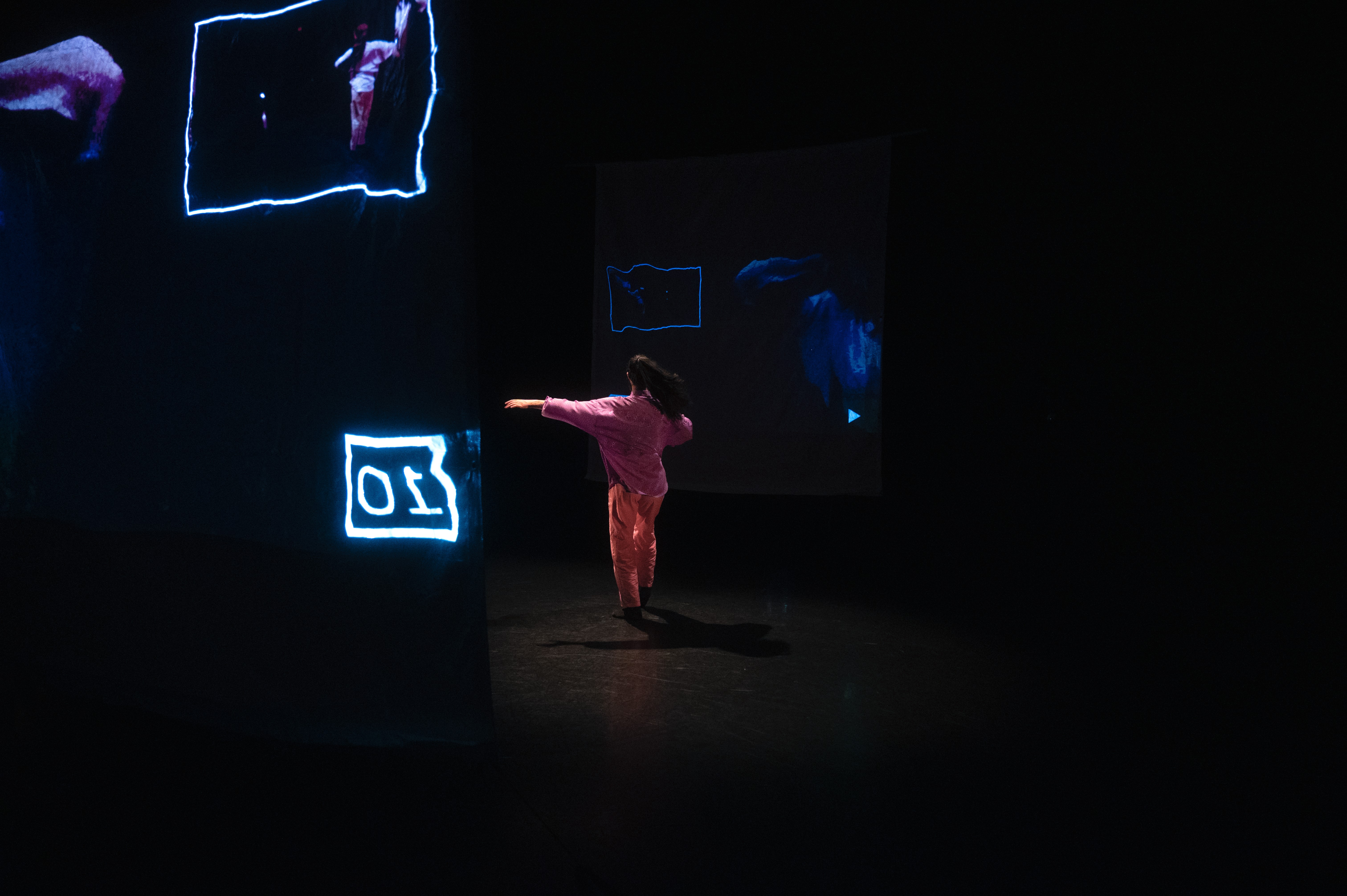
When I tuned in to recent SFU graduate Caroline MacCaull’s 003_playback, I felt like I was watching two shows at once. There was the dance, of course, but the spectacle put on by the audience was equally diverting.
Part of the Dance Centre’s Digital Dance Series, 003_playback is a live-streamed event that allows audience members to vote on aspects of the performance. About 40 people decided, collectively, that the performance should be bottom lit, then that MacCaull should dance in reverse, and so on. We had only a little time to vote before a digital male voice announced the result through the studio speakers.
There was no attempt to hide the cameras, theatre lights, or curtains framing the studio in this bare-bones production. MacCaull danced in the round, never acknowledging the cameras or audience. Her movement was easy, like a cloud floating in the sky, slowly changing shape. She stayed in one pocket of space, gesturing close to her body, never fully in view. Some shots showed her from hip to shoulder, others her just her bare foot, or an arm appearing from the void only to disappear again, her light purple shirt and coral pants contrasting against the darkness.

Electronic sounds filled the space – high pitched, repetitive beeps and blips over the sound of static. This fit perfectly with the minimalist computer terminal imagery and scrolling type that gave the whole experience a nostalgic feel. Once signed in to the performance, we heard the message “loading” repeated until the main show began, with a chat box available to audience members.
At first users posted “hi” or “I’m excited” while a digital female voice read out all the messages. As the show continued, audience members started having full conversations via chat, all of which were read aloud, echoing over the staticy soundscape. Being anonymous gave everyone permission to type whatever they wanted, including responses to the piece (“Dora the movement explorer”), complaints (“too piercing”), and random phrases (“I want your soul”).
So much information was being thrown at the audience at once – my eyes were drawn to the left to watch the dancing, split into multiple neon-edged boxes showing different angles, then to the right to read the non-stop chatter, then to the top of the page to vote before the countdown ran out. I always felt I was missing something. Perhaps because all of the noise was so distracting, the feedback loop between the votes and the performance weren’t clear visually.
003_playback aims to ask questions about who is really in control. When voting on the question “end or continue faster?”, no one voted for the dance to end. It made me wonder if this supposedly 15 minute piece would go on until we let it stop, an intriguing thought. However, the next question was “end or end?”, giving only the semblance of control without any actual power.

Another question came to my mind: what is the performance, and what isn’t? Because the audience is free to do as they wish, they become very active. Is this an intentional part of the piece? Or was this a second show unfolding in real-time while we tried to connect with, and control, each other?
To learn more about The Dance Centre’s upcoming events, visit their website here.
– Kristen Lawson
